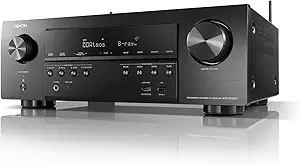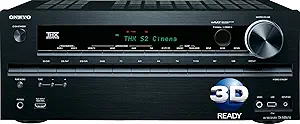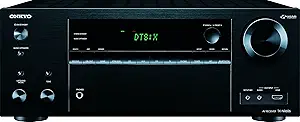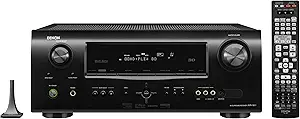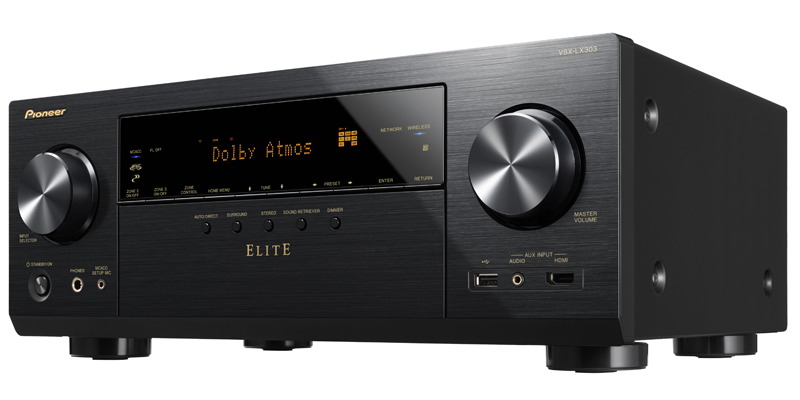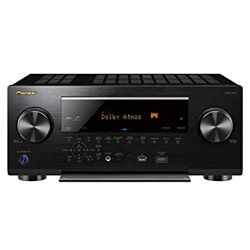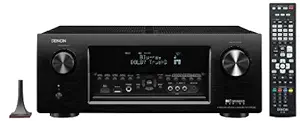Yamaha RX-V683BL VS
Yamaha RX-V685BL

- Brand - Yamaha
- Updated_at - 2023-12-18 19:07:23
- USB - 1

- Brand - Yamaha
- Updated_at - 2023-12-18 19:07:23
- USB - 1
Pros & Cons
Yamaha RX-V683BL
VSPros
- Supports almost all modern formats. You can play any file without problems
- Many decoders let the device decode a video signal
- The output power reaches 665 watts which is enough to enjoy your favorite music
- Supports modern wireless interfaces, like Wi-Fi and Bluetooth
Cons
- No clock or sleeping timer
- Does not support the Apple lossless format
Yamaha RX-V685BL
VSPros
- Great sound, great options within the setup to get the exact sound you want on any input or function.
- Settings can be saved, so not have to be changed each time the unit powers up or when changing scenes/inputs.
- It supports all global streaming services.
- Setup is pretty simple.
Cons
- If you are a free Spotify member, the only way you can listen to Spotify is via "Bluetooth" input connection.
- The price is more elevated.
Specifications
Groups
| Specification | Yamaha RX-V683BL | Yamaha RX-V685BL |
|---|---|---|
| Dimensions | ||
| Dimensions | 14.9 x 17.1 x 6.8 inches | 14.9 x 17.1 x 6.7 inches |
| Built-in Decoders | ||
| Dolby Atmos | ||
| Dts:x | ||
| Dolby True Hd | ||
| Dolby Surround | ||
| Dolby Digital Plus | ||
| Connectivity Interfaces | ||
| Ieee 802.3 | ||
| Wi-fi | ||
| Bluetooth | ||
| Ieee 802.3u | ||
| Connector Type | ||
| Coaxial Digital Inputs | 2 | 2 |
| Optical Digital Inputs | 2 | 2 |
| Phones | 1 | 1 |
| Av Inputs | 1 | 7 |
| Usb | 1 | 1 |
| Subwoofer Outputs | 2 | 2 |
| Coaxial Digital Outputs | has not | has not |
| Optical Digital Outputs | has not | has not |
| Hdmi Outputs | 1 | 2 |
| Hdmi Inputs | 6 | 5 |
| Media Content Source | ||
| Bluetooth | ||
| Usb-host | ||
| Network | ||
| Additional Features | ||
| Advanced Sound Retriever (asr) Technology | ||
| Three-zone Capability | ||
| Smartphone Remote Control | ||
| A-b Speaker Switch | ||
| Dual-zone Capability | ||
| Pure Direct Mode | ||
| Auto Power Off | ||
| Bi-amplifying | ||
| Audio Return Channel (arc) | ||
| Apple Air-play Support | ||
| Amplifier | ||
| Total Output Power | 610 W | 650 W |
| Total Harmonic Distortion | 0.09 % | 0.08 % |
| Frequency Response | 20 Hz-20 kHz | 20 Hz-20 kHz |
| Output Impedance Per Channel | 8 Ohm | 4 Ohm, 6 Ohm |
| Output Power Per Channel | 105 W, 150 W, 90 W | 90 W |
| Sound Features | ||
| Audio D/a Converter | 24bit / 192kHz | 32bit / 192kHz |
| Digital Content Protection | HDCP 2.2 | HDCP 2.2 |
| Surround System Class | 7.2 channel | 7.2 channel |
| Surround Sound Effects | CINEMA DSP 3D. Virtual CINEMA DSP. Virtual CINEMA FRONT. Virtual Presence Speaker. Virtual Surround Back Speaker | Virtual CINEMA |
| Audio Formats | ||
| Aac | ||
| Wma | ||
| Wav | ||
| Mp3 | ||
| Flac | ||
| Apple Lossless | ||
| Aiff | ||
| Functions | ||
| Network Audio Player | ||
| Internet Radio | ||
| Digital Player | ||
| Power Device | ||
| Standby Power Consumption | 0.1 W | 0.1 W |
| Operational Power Consumption | 260 W | |
| Built-in Display | ||
| Colour | black | black |
| Type | fluorescent | fluorescent |
| Signal Processing | ||
| Upscaling Via Hdmi | up to 4K | up to 4K |
| 3d Pass-through | ||
| Video Conversion/scaling | HDMI to HDMI scaling, analog to HDMI up conversion | HDMI to HDMI scaling, analog to HDMI up conversion |
| Hdmi Pass-through | up to 4K | up to 4K |
| Radio | ||
| Preset Station | 40 | |
| Tuner Bands | AM/FM | AM/FM |
| Tuner Type | digital | digital |
| Clock | ||
| Sleep Timer | ||
| Built-in Clock | ||
| General | ||
| Brand | Yamaha | Yamaha |

